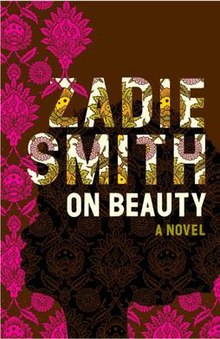E.M. Forster’s Howard’s End has been ranked as among the 100 best English-language novels of the twentieth century. The author conceded: ‘[It] is my best novel and approaching a good novel. Very elaborate and all pervading plot that is seldom tiresome or forced, range of characters, social sense, wit, wisdom, colour.’ But then, he added: ‘Have only just discovered why I don’t care for it: not a single character in it for whom I care . . . I feel pride in the achievement, but cannot love it.’
Zadie Smith pays homage to Howard’s End in her Orange Prize-winning novel, On Beauty, by borrowing Forster’s structural scaffolding. Through the plot alone, she recreates Forster’s range of character, social sense, wit, wisdom and colour, and adds to this the wholly felt, inhabited, involved characters of Gustave Flaubert’s Madame Bovary. (Each character is defined and luminescent; the cast, a constellation never seen before – at least not by this reader.) Despite an omniscient, unobtrusive, non-judgmental narrator, we see the characters both from the outside-in and the inside-out – their exterior versus interior realities, grappling with authenticity. Whether or not self-expression is possible and tolerable is explored. Selfhood is at stake. Tested on all sides by what is deemed socially, culturally and academically permissible. It sounds like a very traditional set of themes, but to me the novel is more prescient and urgent now than ever.

Being from a working class background, Smith says she envies the wealthy, expensively-educated novelists (such as Forster) whose family and neighbours would and could read their books. Did writing such a novel (and acquiring an education that enables the requisite social mobility) rob Smith of her class identity? Perhaps it’s a moot question now that the mere promise of social mobility and meritocracy have been well and truly reneged, what with university fees in the UK and the renaissance of cronyism and plutocracy. Though Smith’s education was free, her children’s education is not – meaning they would not have been able to get a tertiary education had their mother’s education not been free. The class trap has been reset, and it is kept very well oiled by the wealthy. Class and race are as inextricably linked in England as they are in America, and the children from the collapsing marriage between (arguably, the protagonist of On Beauty) Kiki (a black Florida-born woman) and Howard (a white London-born man – an Art History professor at an elite American institution) each have different relationships to their class, their education, their blackness, their culture(s) and –importantly – to art and beauty . . . its different modes and arenas (e.g. spoken word versus ‘poetry poetry’.) Who is allowed to express what, how, why . . . and who says so?
The characters all fear that what they want to pursue will make them a less authentic version of who they are. One character experiences this as a radical division of self; another, as a self-retrieval. But the novel suggests that these fears are unfounded: that identity is fallible only to the extent that a person is fallible. It’s often said that Smith writes about the search for identity when she is writing instead about the redundancy of that search. This is what makes On Beauty so vital just now – especially in Britain and America, for reasons of nationalism, racism, sectarianism, protectionism, and (white) America/Britain first-ism. Let me quote Smith here, because she is notoriously eloquent:
‘The idea that you can be less authentic than you are is nonsense,’ Smith tells Michael Silverblatt in the podcast ‘Bookworm’. ‘White people have an existential freedom’ in this regard, she says, but ‘they don’t even notice. [It is] what everyone deserves to have and is natural.’ In conversation with Yaa Gyasi and Courtney Martin at the Obama Foundation, Smith says: ‘I don’t believe [that] political differences – as we understand them in America – are the most important differences in human life and behaviours.’ Just because she doesn’t hold the same political beliefs as a character, for instance, doesn’t mean she is offended by that character’s beliefs. ‘As a person who feels that identity is real and also constructed, I’m interested in coalition across difference. That’s the story of my life. The story of my family and partially the story of my country.’
I am reaching my word count limit, but there is so so much to say about this book; about the necessity of empathy, the fallacy of authenticity, the ways a person can engage with their communities, the inestimable value of art for how it educates the emotions (Aristotle), let alone about the enormously pleasurable writing and the humour! It is as funny as it is moving. If this is a novel partly about what is bequeathed to whom, and whether or not (and how) one chooses to assume that heritage and have it function in the world, then Smith has taken the traditional British novel, torn out all the self-delusions, classism, racism and misogyny, and added a new chapter – increasing its value immeasurably.







